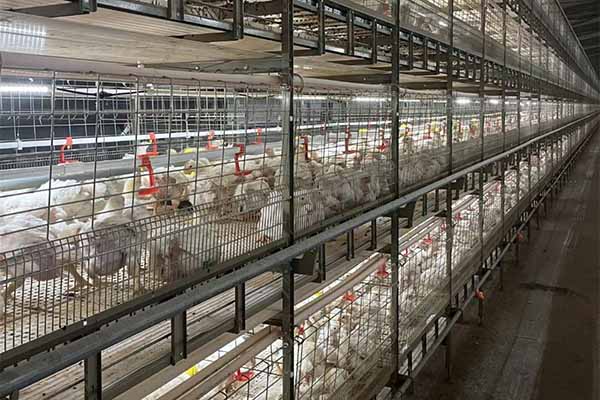The Cost of Cage Farming Setup: A Comprehensive Guide
Cage farming is a popular method for raising chickens, offering advantages such as easier management and healthier birds. However, one of the first considerations for any aspiring farmer is the cost of setting up a cage farming operation. In this article, we will explore the various components that contribute to the overall cost of cage farming setup, providing both experts and farm owners with a clear understanding of the financial implications.
Initial Investment
The initial investment in a cage farming setup can be quite substantial. Here are the key components:
1. Cages and Racks: The cost of purchasing cages and racks is one of the most significant expenses. The type of cage, material, and size will all affect the price.
2. Ventilation Systems: Proper ventilation is crucial for maintaining optimal conditions within the cage. The cost of ventilation systems can vary based on the size of the farm and the level of efficiency required.
3. Feeding Systems: Automated feeding systems can reduce labor costs but also represent a significant upfront investment.
4. Watering Systems: Similar to feeding systems, automated watering systems can be expensive but are essential for maintaining the health of the chickens.
5. Environmental Control Systems: Temperature and humidity control are vital for the well-being of the chickens. The cost of these systems can vary greatly depending on the scale of the operation.
6. Building Costs: If you are constructing a new facility, the cost of building materials and labor will need to be factored into the initial investment.
Operational Costs
In addition to the initial setup costs, there are ongoing operational expenses to consider:
1. Energy Costs: Running the ventilation, feeding, and environmental control systems requires energy, which can be a significant expense.
2. Labor Costs: Depending on the scale of the operation, you may need to hire staff to manage the chickens and the equipment.
3. Maintenance Costs: Regular maintenance of the cages, equipment, and facility is necessary to ensure optimal performance and longevity.
4. Feed and Water Costs: The cost of feed and water will vary based on the number of chickens and the quality of the products.
Conclusion
The cost of cage farming setup is a multifaceted issue that requires careful planning and consideration. By understanding the various components and their associated costs, you can make informed decisions that will benefit your farm in the long run.
At Livi Machinery, we are dedicated to providing high-quality chicken farming equipment and services that meet the needs of our clients. Our range of products is designed to optimize your operation and reduce costs. If you are looking to set up a cage farming operation or improve your existing one, contact us today for more information.

